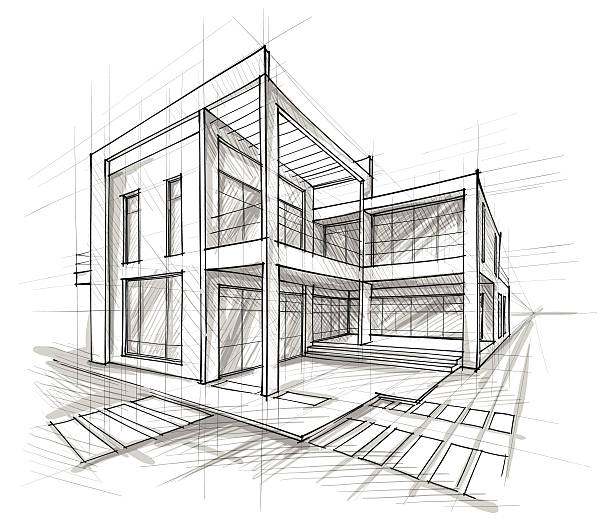Recognizing the Collaborative Refine In Between Designers and Designers in Modern Building And Construction Projects
The joint procedure in between designers and engineers is vital in contemporary building jobs, as it harmonizes design intent with design usefulness. This collaboration not just influences the aesthetic and functional facets of a task however also plays an important role in addressing sustainability obstacles. By using efficient communication strategies and leveraging innovative modern technologies, such as Structure Information Modeling (BIM), groups can function much more cohesively. The intricacies of this cooperation commonly present unique difficulties that can hinder progression. Checking out these dynamics discloses insights that can considerably impact job outcomes and general industry criteria.
The Relevance of Partnership
The joint synergy between engineers and designers is vital for the effective realization of any type of building and construction project. This partnership combines unique proficiency and point of views, making it possible for the integration of innovative style with sensible design solutions. By working with each other, engineers and designers can make sure that a task not only meets aesthetic and practical demands yet additionally adheres to safety, sustainability, and financial restrictions.
Cooperation cultivates a common vision, facilitating the alignment of goals and expectations from the outset. This positioning is vital in resolving possible obstacles and mitigating risks that could occur during the project lifecycle. A collaborative method allows for the efficient allocation of resources, maximizing both time and price.
The value of partnership reaches the iterative process of layout and building, where comments from engineers can inform building decisions, leading to even more viable and lasting designs. Conversely, engineers can influence engineers to believe creatively about just how to accomplish structural honesty without jeopardizing artistic intent. Ultimately, the joint connection in between designers and engineers is not merely beneficial; it is basic to the creation of high-quality, useful, and ingenious constructed atmospheres that meet the requirements of society.
Interaction Methods and Tools
Reliable communication strategies and tools are essential for fostering cooperation between engineers and engineers throughout the job lifecycle. Establishing clear networks of communication is necessary to make certain that all employee are aligned with job purposes, timelines, and obligations. Regular meetings, both in-person and digital, provide chances for stakeholders to talk about progression, address concerns, and make notified choices.
Utilizing job monitoring software, such as BIM (Structure Details Modeling) platforms, improves cooperation by enabling real-time sharing of style modifications and technical specs. These devices facilitate openness, permitting engineers and engineers to imagine adjustments and assess their effect on the general job.

Shared Goals and Project Vision

Establishing common goals entails open dialogue and a detailed understanding of each self-control's payments. Engineers typically concentrate on style intent, spatial relationships, and user experience, while designers emphasize structural honesty, systems capability, and conformity with policies (cda architects). When these point of views are lined up, the outcome is a cohesive job that abides by both creative ambitions and technological feasibility
Additionally, a distinct project vision fosters responsibility among team participants, encouraging each individual to take possession of their function in achieving the wanted result. Regular check-ins and collective workshops can better reinforce this commitment, enabling adjustments to be made as the job develops. Inevitably, a shared vision not only enhances team effort however additionally boosts the quality of the final deliverable, resulting in successful job completion.
The Function of Innovation
Leveraging innovation has actually become vital in boosting collaboration between engineers and designers. Building Info Modeling (BIM) stands check my site out as special info an essential modern technology, allowing both designers and designers to develop detailed 3D models that encapsulate style intent and architectural honesty.
Moreover, cloud-based platforms allow smooth cooperation, permitting project stakeholders to access and update job data from anywhere. This fosters a culture of transparency and responsibility, as modifications can be tracked and evaluated in real-time. Additionally, mobile applications more enhance communication, providing on-site teams with immediate access to project specs and updates.
Arising modern technologies such as artificial knowledge and artificial intelligence are also beginning to contribute in predictive evaluation, aiding groups recognize prospective problems before they emerge. Inevitably, the duty of modern technology in architecture-engineering cooperation not just enhances workflow efficiencies but additionally boosts advancement, causing more successful task end results. By accepting these technical improvements, designers and engineers can ensure an extra natural and productive joint procedure throughout the building lifecycle.
Study in Effective Partnerships
Numerous study highlight the profound influence of efficient partnerships in between designers and engineers on task results. One notable instance is the partnership on the High Line in New York City City, where landscape designers, engineers, and city planners worked together to change an abandoned railway into a lively public park. This multidisciplinary method not just improved the visual high quality yet likewise made certain structural safety and security and environmental sustainability.
An additional exemplary instance is the design and building and construction of the Sydney Opera Home. The collaboration between designer JÃ ¸ registered nurse Utzon and structural designer Ove Arup exemplified ingenious analytic. Their partnership permitted for the iconic shell-like style while resolving complex design obstacles, ultimately causing a classic architectural masterpiece.
The Burj Khalifa in Dubai better demonstrates the importance of joint initiatives. cda architects. The integration of design and design knowledge enabled the job group to accomplish unmatched elevations while sticking to safety policies and visual vision
These instances emphasize the importance of interaction, trust fund, and shared objectives. In today's complex building atmosphere, such collaborations are important to navigating obstacles and delivering projects that satisfy both useful and visionary objectives.
Verdict
In conclusion, the cooperation in between designers and engineers is crucial for the success of contemporary building jobs. Effective communication methods, a common task vision, and the assimilation of sophisticated innovations are critical components that promote this collaboration.
Comments on “Why CDA Architects Are Leaders in Architectural Design and Development”